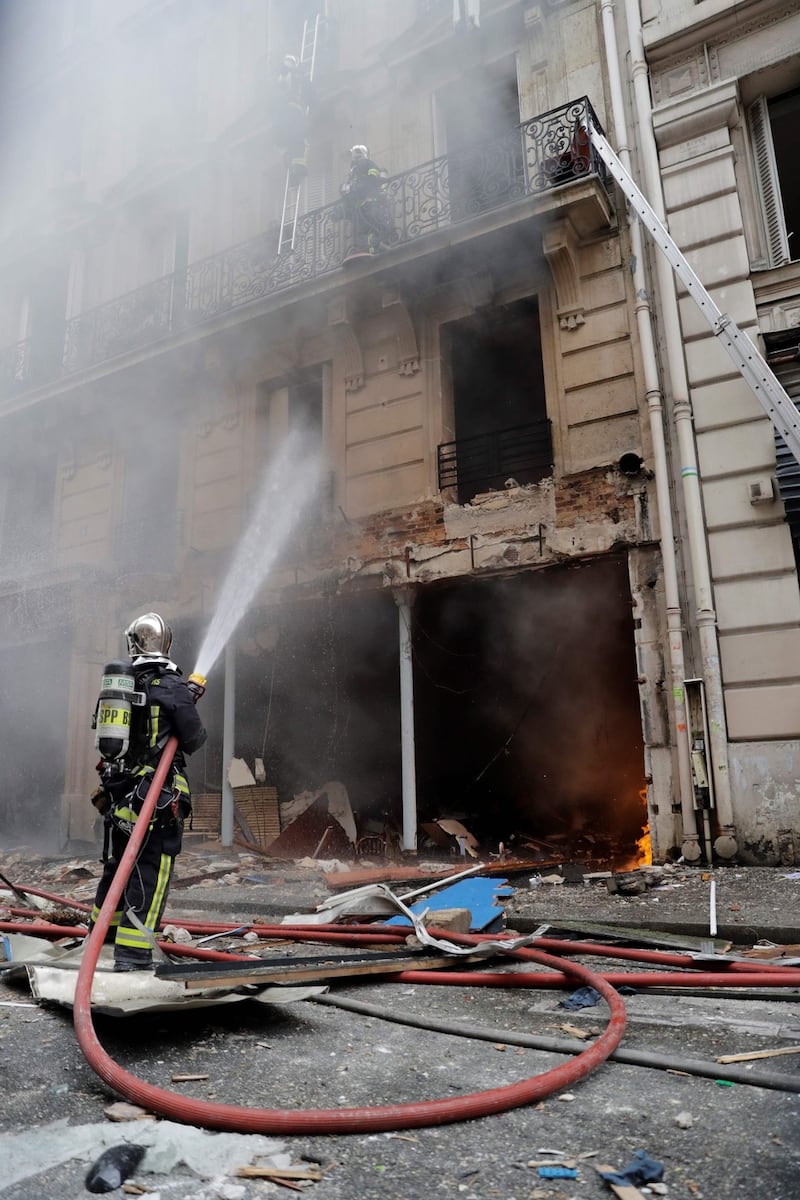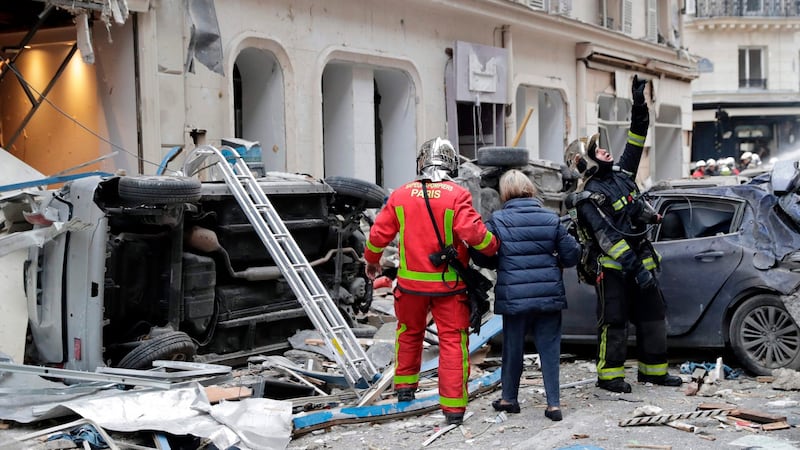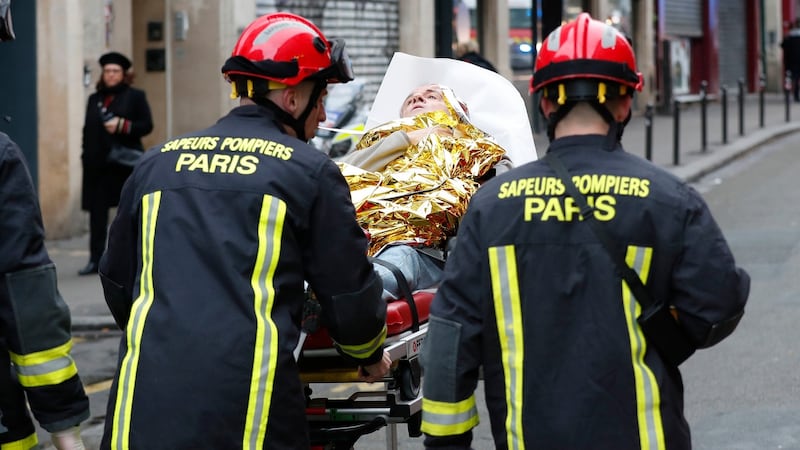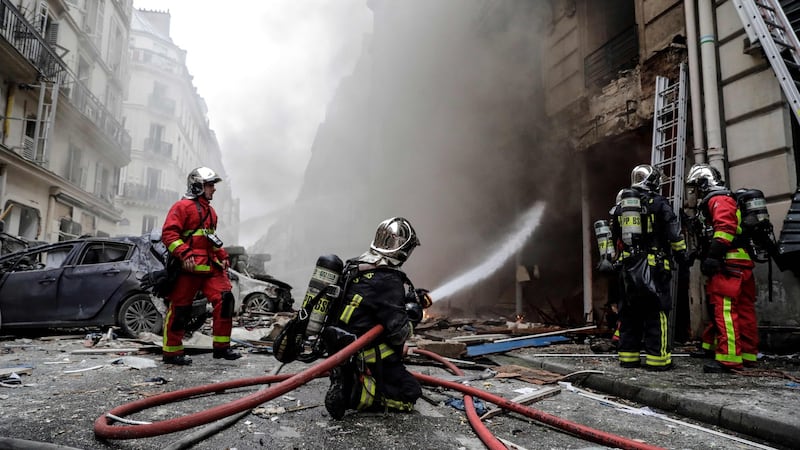Inhabitants of Paris’s ninth district feared an earthquake, plane crash or bomb, when a powerful explosion at 6, rue de Trevise, killed at least four people and injured 50 others, 10 seriously, just before 9am on Saturday.
Injuries included smoke inhalation, burns and broken bones or wounds from flying debris.
A woman living on the second floor of the building called the fire brigade at 8.45am to complain of a strong smell of gas. Firemen arrived 10 minutes later, just before the explosion which gutted the ground floor of Hubert bakery, the basement and first floor of the building.

Authorities do not know if the gas leak occurred in the bakery, which was closed, the adjacent restaurant or the basement.
Two firemen were killed, Simon Cartannaz (28) from the French alps and Nathanael Josselin (27) from Burgundy. "They took the full force of the blast," said Eric Moulin of the Paris fire department. A crowdfunding website raised €12,000 for the families of the firemen by Sunday morning.
Laura Sanz Nombela (38) from Burgillos, near Toledo, died hours later in hospital. The Spanish mother-of-three was spending a week's holiday with her husband at the hotel across the street.
The body of the fourth fatality, a woman who lived on the first floor directly above the explosion, was found buried in debris on Sunday.
A third fireman, Maxime Acard, was buried for two hours before he was dug out by colleagues. He is hospitalised in serious condition, but his life is no longer in danger.
The explosion is believed to have been caused by a gas leak, “but we’re not excluding any possibility”, said Paris prosecutor Rémy Heitz. The judiciary police have opened an investigation.




Dazed residents of the area wandered out of apartments and hotels into the street, some bleeding and others wearing underclothes or pyjamas. Buildings were damaged in the rues de Trevise, Montyon, Sainte-Cécile and Bergère, over a radius of 100m. The residents of 12 buildings will not be allowed to return until experts certify the structures are safe – “several days at a minimum”, said first deputy mayor of Paris Emmanuel Grégroire.
The town hall of the ninth district was turned into an emergency centre, dispensing food, beverages and psychological counselling. Facebook activated its “Safety Check” feature, which is usually used to enable individuals to reassure loved ones that they have survived a terrorist attack or natural disaster.
City’s ‘decrepit’ gas system
About 150 people were placed in temporary lodging at a gymnasium in the adjacent 10th district, in hotels and in the homes of volunteers.
Rescue helicopters landed and took off from the square in front of the Opera Garnier, because demonstrations by gilets jaunes protesters had blocked many streets.
Conservative city Cllr Alexandre Vesperini, who is a member of the gas safety commission, sparked a controversy by telling Le Parisien newspaper that the Paris network, which is more than a century old, "is in a state of advanced and catastrophic decrepitude . . . When you talk to firemen they tell you, 'the number one problem in Paris is gas'."
The ecology ministry says 52 people died between 2010 and 2014 in accidents due to natural gas and gas cannisters. Mr Vesperini suggested it might be necessary to change to an all electric system.
Mayor of the ninth district Delphine Burklicalled Mr Vesperini’s allegations “indecent”. She said it was “time to help the victims and organise assistance, not this kind of debate”.
The gas company GRDF said it spends €50 million annually to maintain the network and that 40km of gas pipes have been renovated.




